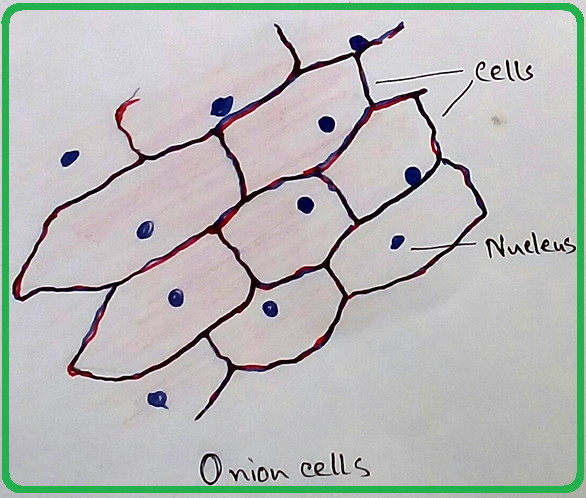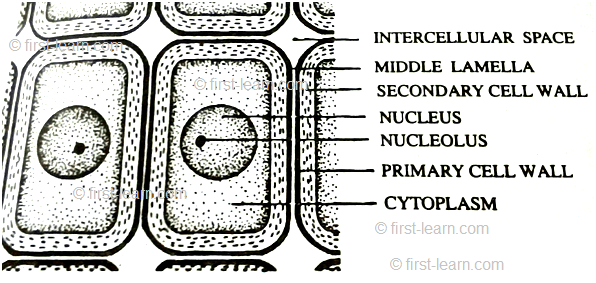Onion Peels Observed Under the Microscope
Cells present in onion peel can be observed
under microscope. For this onion peels are first isolated. For this experiment outer
most scale of the onion is removed and is cut into four equal halves. It is a
monocot plant. Then with the help of a pairs of forcep the scale of onion is
peeled out. It should be fleshy unless in the dried ones experiment cannot be
done due to the absence of proper cellular structure. Then the onion peel is
sized into 5mm × 5mm size (approx). A slide should be properly cleaned and keep
it for the preparation of the onion peel.
Then the part of the onion peel is placed on the slide and a previously cleaned cover slip is placed on the part of the peel. During the placement of cover slip precautions should be taken that there should not be present of air bubbles. It is stained with iodine solutions or eosin solutions. Eosins are responsible for staining of nucleus as it is acidic in nature. After adding of stain by the help of dropper excess stain should be removed by washing. Then the prepared slide can be observed under microscope.
Observation under Microscope - Cells are appeared to be prominent, individual, linear, rectangular in shape. If it is observed under electron microscope in low resolution then the presence of cell wall and nucleus are observed. But if it is observed under microscope in high resolution then presence of cell vacuoles can be observed properly.
Characteristics features of the onion peels are -
1. Cells are firmly bound to each other.
2. Nucleus present in the cells are slightly towards the periphery of the cells. Which is the one of the confirmation point of onion peel.
From Onion Peels Observed Under the Microscope to HOME PAGE
Recent Articles
-
Explain about Growth in Plants |Definition of Growth & Differentiation
Feb 27, 25 02:07 PM
Growth is a permanent increase in length or volume of an organism that brought upon by an increase in its dimensions due to synthesis of new protoplasmic material. -
Definition of Respiratory Quotient | calculation | Application | Plant
Dec 02, 24 12:09 AM
Definition of respiration quotient- the ratio of the carbon-dioxide evolved to that of the oxygen consumed by a cell, tissue, plants or animals in a given time is called respiratory quotient. It is us… -
Amphibolic Pathway | Definition | Examples | Pentose Phosphate Pathway
Jun 06, 24 10:40 AM
Definition of amphibolic pathway- Amphibolic pathway is a biochemical pathway where anabolism and catabolism are both combined together. Examples of amphibolic pathway- there are different biochemical… -
Respiratory Balance Sheet | TCA Cycle | ATP Consumption Process
Feb 18, 24 01:56 PM
The major component that produced during the photosynthesis is Glucose which is further metabolised by the different metabolic pathways like glycolysis, Krebs cycle, TCA cycle and produces energy whic… -
Electron Transport System and Oxidative Phosphorylation | ETC |Diagram
Feb 04, 24 01:57 PM
It is also called ETC. Electron transfer means the process where one electron relocates from one atom to the other atom. Definition of electron transport chain - The biological process where a chains…















New! Comments
Have your say about what you just read! Leave me a comment in the box below.